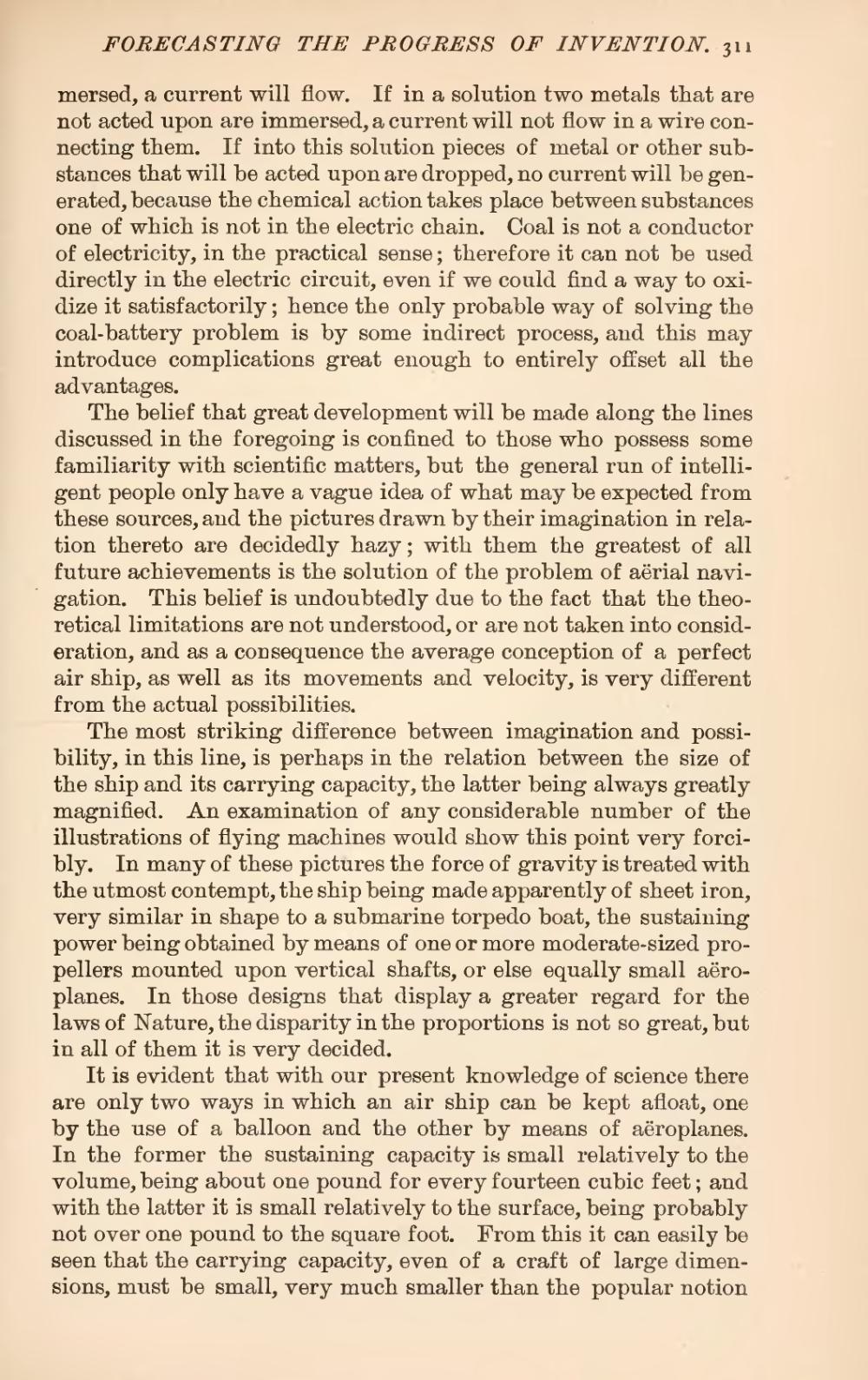mersed, a current will flow. If in a solution two metals that are not acted upon are immersed, a current will not flow in a wire connecting them. If into this solution pieces of metal or other substances that will be acted upon are dropped, no current will be generated, because the chemical action takes place between substances one of which is not in the electric chain. Coal is not a conductor of electricity, in the practical sense; therefore it can not be used directly in the electric circuit, even if we could find a way to oxidize it satisfactorily; hence the only probable way of solving the coal-battery problem is by some indirect process, and this may introduce complications great enough to entirely offset all the advantages.
The belief that great development will be made along the lines discussed in the foregoing is confined to those who possess some familiarity with scientific matters, but the general run of intelligent people only have a vague idea of what may be expected from these sources, and the pictures drawn by their imagination in relation thereto are decidedly hazy; with them the greatest of all future achievements is the solution of the problem of aërial navigation. This belief is undoubtedly due to the fact that the theoretical limitations are not understood, or are not taken into consideration, and as a consequence the average conception of a perfect air ship, as well as its movements and velocity, is very different from the actual possibilities.
The most striking difference between imagination and possibility, in this line, is perhaps in the relation between the size of the ship and its carrying capacity, the latter being always greatly magnified. An examination of any considerable number of the illustrations of flying machines would show this point very forcibly. In many of these pictures the force of gravity is treated with the utmost contempt, the ship being made apparently of sheet iron, very similar in shape to a submarine torpedo boat, the sustaining power being obtained by means of one or more moderate-sized propellers mounted upon vertical shafts, or else equally small aëroplanes. In those designs that display a greater regard for the laws of Nature, the disparity in the proportions is not so great, but in all of them it is very decided.
It is evident that with our present knowledge of science there are only two ways in which an air ship can be kept afloat, one by the use of a balloon and the other by means of aëroplanes. In the former the sustaining capacity is small relatively to the volume, being about one pound for every fourteen cubic feet; and with the latter it is small relatively to the surface, being probably not over one pound to the square foot. From this it can easily be seen that the carrying capacity, even of a craft of large dimensions, must be small, very much smaller than the popular notion
